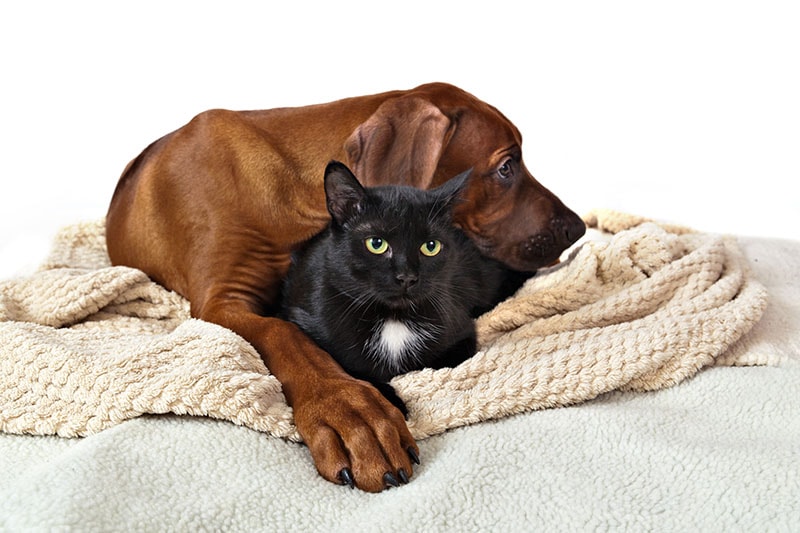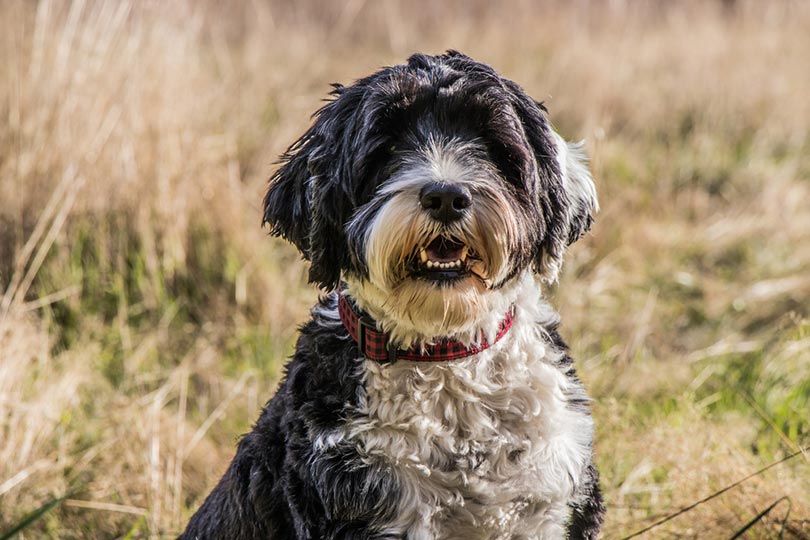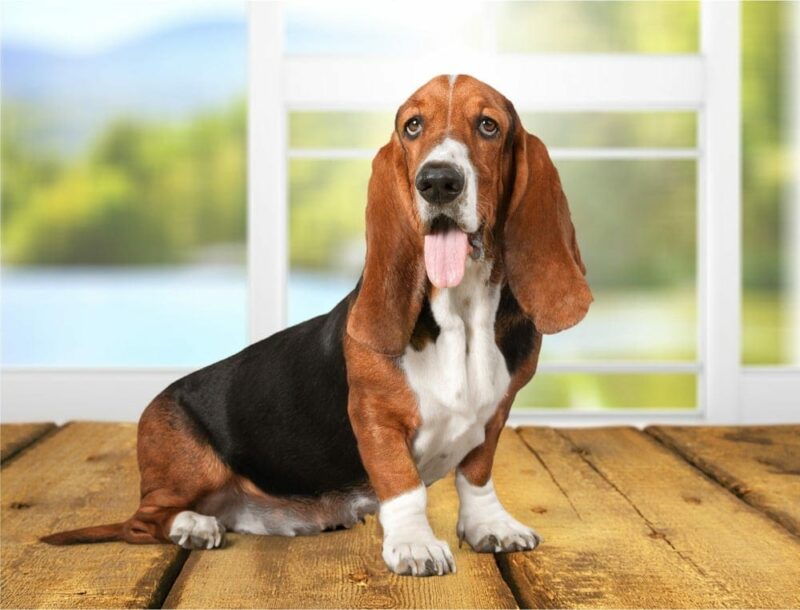Great Pyrenees vs. St. Bernard: Key Differences (With Pictures)
Updated on
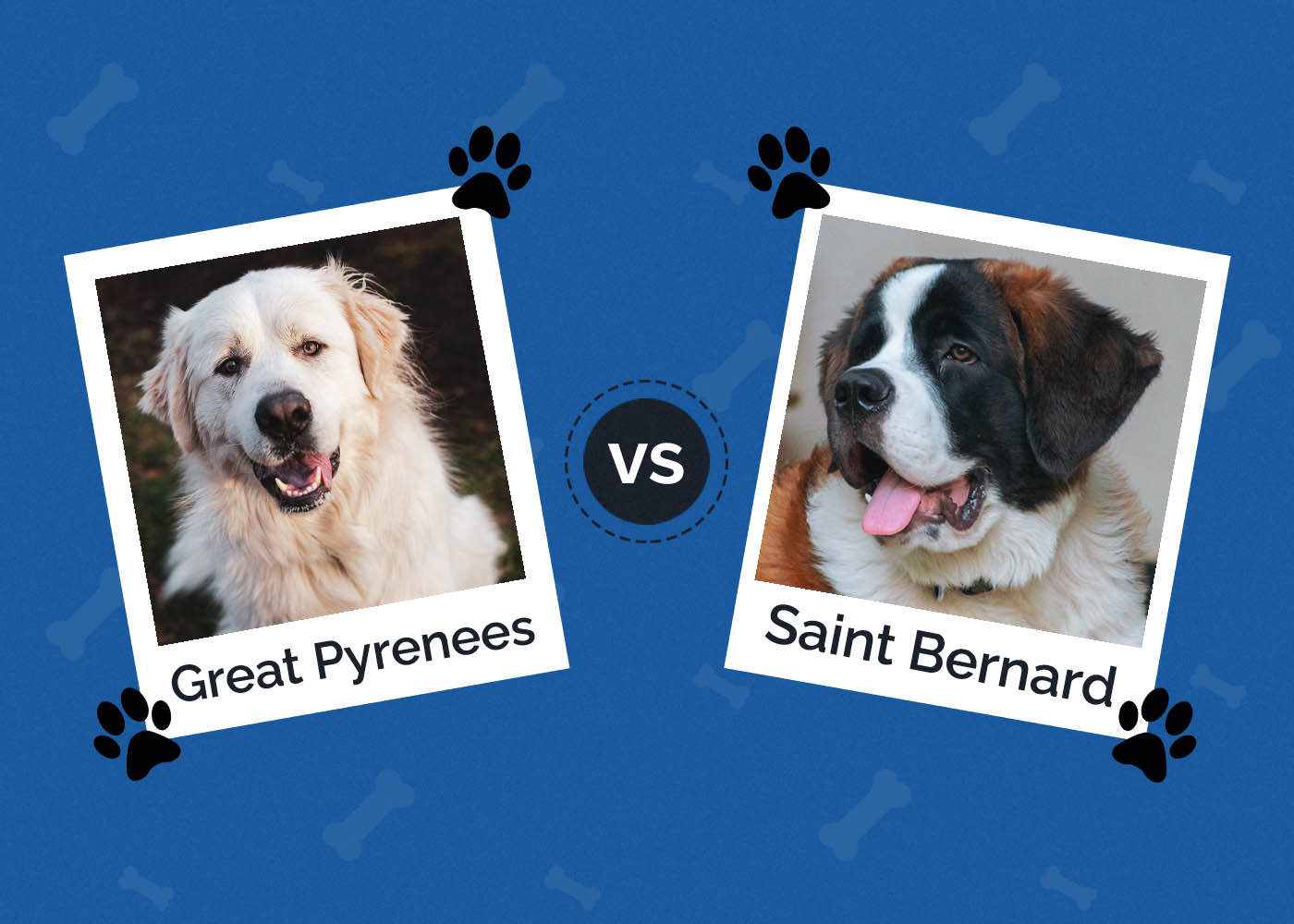
Click to Skip Ahead
Both the Great Pyrenees and Saint Bernard are very large dogs and they’re often grouped into the same categories. However, despite their perceived similarities, there are many differences between these two breeds.
For instance, Saint Bernards are much larger, weighing up to 75 pounds more than the Great Pyrenees. The great Pyrenees were largely kept as herding dogs and still have strong herding instincts. Saint Bernards, on the other hand, do not.
These differences matter and help determine which breed is better for you. Below, we’ll dive into all their differences.
Visual Differences
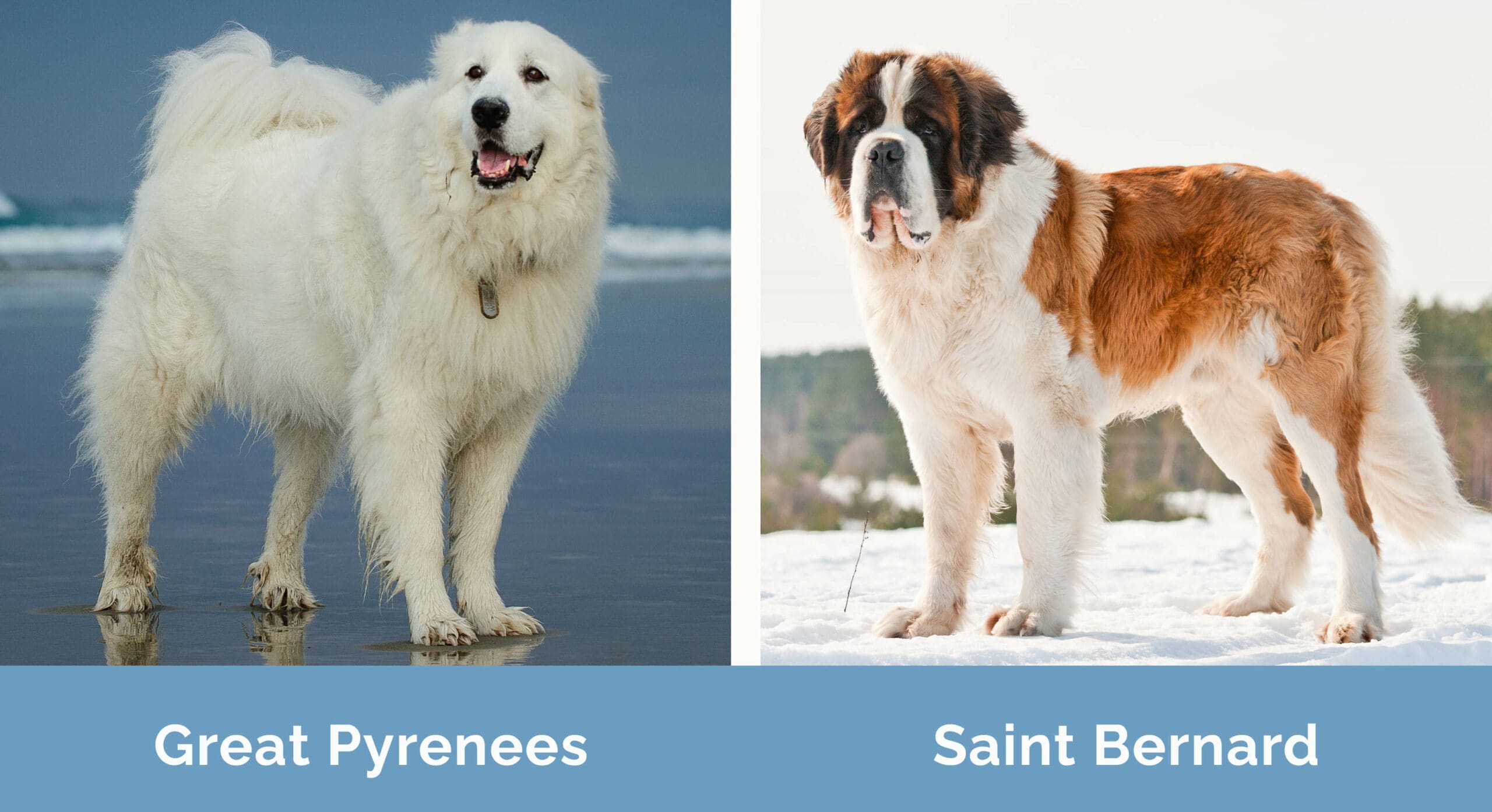
At a Glance
- Average height (adult): 25–32 inches
- Average weight (adult): 85–115 pounds
- Lifespan: 10–12 years
- Exercise: Moderate
- Grooming needs: Regular brushing
- Family-friendly: Yes
- Other pet-friendly: Sometimes
- Trainability: Intelligent but independent
- Average height (adult): 25–28 inches
- Average weight (adult): 140–180 pounds
- Lifespan: 8–10 years
- Exercise: Moderate
- Grooming needs: Regular brushing
- Family-friendly: Yes
- Other pet-friendly: Yes
- Trainability: Intelligent but Independent
Saint Bernard Overview
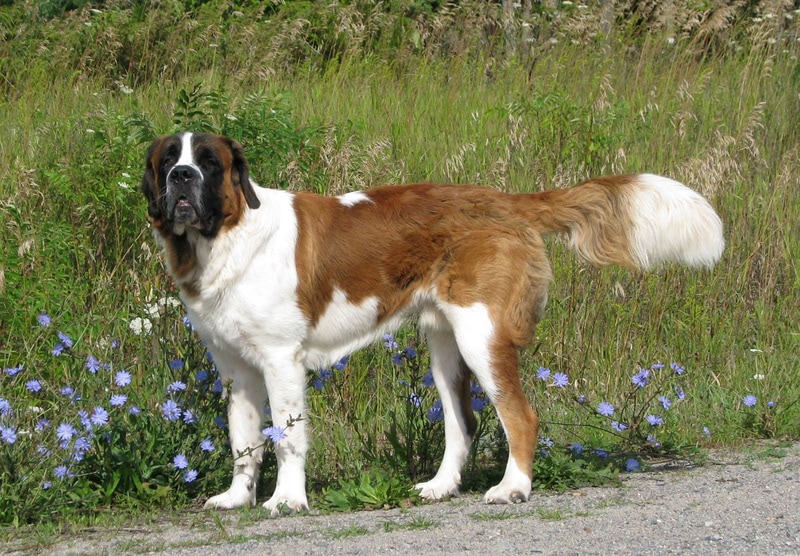
Saint Bernards are known for their huge size and even bigger hearts. They may not be one of the most popular dogs out there, but they absolutely are one of the most recognizable.
Temperament
Saint Bernards practically coined the term “gentle giant.” They’re known for being calm, gentle, and loving. They’re great with kids, as their calm nature helps them put up with rambunctious toddlers.
Plus, despite being very big, Saint Bernards are often quite cuddly. Imagine a fluffy, slobbery teddy bear that craves your attention and showers you with unwavering love. The Saint Bernard is truly a four-legged embodiment of snuggles.
Historically, these brave canines helped stranded travelers in the treacherous Swiss Alps, leading to numerous heartwarming tales. Their innate sense of direction and their ability to navigate treacherous terrains made them indispensable.
Despite being mostly kept as pets today, these dogs are still known for being extremely brave.
Grooming
These dogs are very hairy and shed a lot. Their fur will get matted and tangled without regular brushing. Luckily, this is about all they need. Still, they are very big, so a “quick brush” often takes far more time than “quick.”
Furthermore, when it comes to drooling, Saint Bernards are true champions. They leave behind impressive trails of drool wherever they go. It’s a good idea to keep some towels handy and embrace the notion that drool is now an integral part of your daily life.
Of course, this isn’t everyone’s cup of tea. If you can’t handle the thought of drool everywhere, you probably shouldn’t get a Saint Bernard.
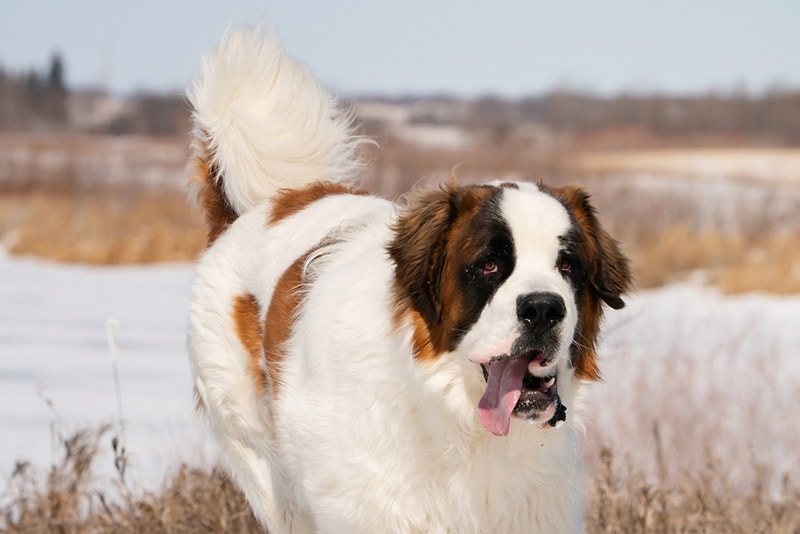
Exercise
Saint Bernards are large dogs, but that doesn’t mean they lay around all day. These canines require moderate amounts of exercise. Just like most puppies, younger dogs will be particularly energetic.
It’s important to avoid overexertion due to their potential joint issues. They are not built for prolonged or intense physical activities, so short walks and gentle playtime are sufficient to keep them happy and healthy. Too much exercise can lead to joint problems. These dogs already put a lot of strain on their joints by just being so big.
Suitable For:
These dogs are suitable for families with children of all ages who are looking for an affectionate companion. They do best with experienced dog owners. Due to their larger size, they can be a handful if not trained or socialized properly.
Great Pyrenees Overview
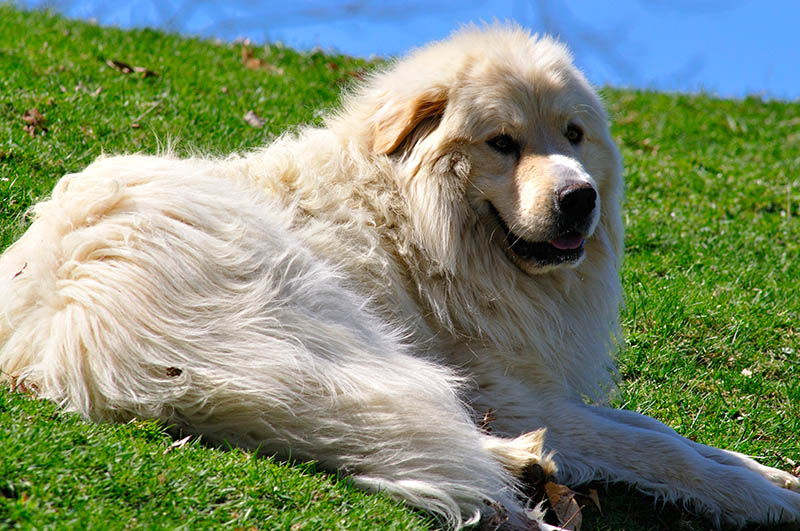
The Great Pyrenees was originally bred as livestock guardians, which is why they are so big. However, they can also be great family pets for the right people.
Temperament
These dogs are known for their gentle, loving hearts. They’re extremely people-oriented and bond closely with their family, creating a bond that’s as strong as the mountains they came from.
However, they are not recommended for homes with children. Their herding instincts can be directed at children (or anything small that moves, really), which can sometimes lead to accidents.
Furthermore, these dogs are also extremely protective. They were guardians, after all. These protection instincts are often well-loved by Great Pyrenees enthusiasts. However, these canines do need to be heavily socialized to ensure their instincts are directed where they need to be (and not at your family friends).
Grooming
The Great Pyrenees boasts a beautiful double coat designed to withstand harsh weather conditions in their native Pyrenees Mountains. While their luxurious fur provides excellent insulation, it also requires regular grooming.
Prepare for a fair share of fur in your life and embrace the occasional grooming sessions to keep their coat looking magnificent. If you want a low-maintenance dog, you should look elsewhere. These dogs are heavy shedders, and they have a lot of fur. This combination often means they leave a trail of fur wherever they go.
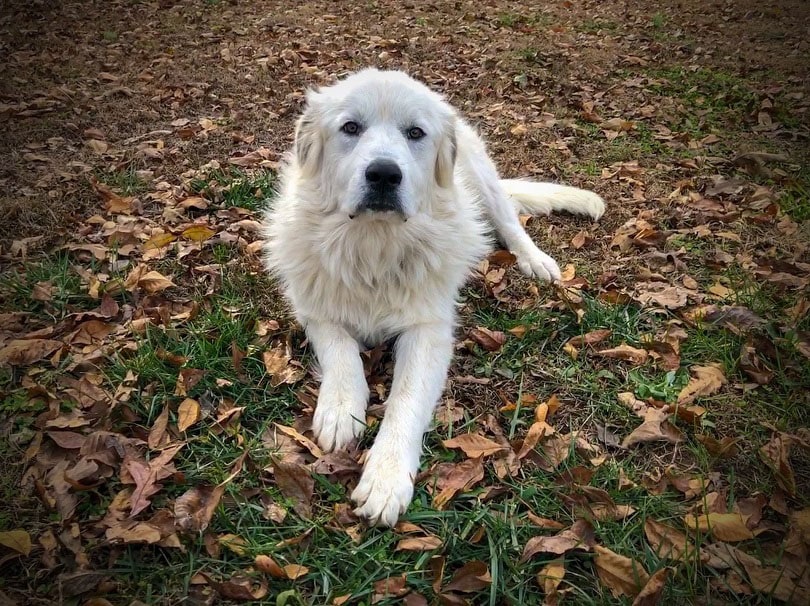
Exercise
Great Pyrenees dogs have moderate exercise needs. They’re quite large, but you must still take them on regular walks. While they enjoy exploring and sniffing around, they are not known for high-intensity exercise or endurance activities.
Just like with the Saint Bernard, you must be cautious with over-exercising these dogs. They are prone to joint problems, which can be made worse by excessive exercise. Puppies are particularly at risk and should be monitored carefully. Never force a Great Pyrenees to exercise.
Suitable For:
The Great Pyrenees works best for individuals or families with older children. Experienced dog owners are best, as these dogs are protective and need plenty of socialization. They also need plenty of room, making them less suitable for apartments.
Are the Great Pyrenees and Saint Bernard Related?
While both of these breeds do have similar origin stories, they aren’t directly related. The Great Pyrenees originated from the Pyrenees Mountains on the border of France and Spain, hence their name. They were bred to guard livestock in these mountains. When you’re fending off predators, bigger is typically better.
On the other hand, Saint Bernards are from the Swiss Alps and are named after the Saint Bernard Pass. They were originally bred by monks at the Hospice of the Great St Bernard Pass to assist in search and rescue operations in the treacherous mountain pass.
Both breeds are likely so similar because they come from mountainous, cold areas. However, they aren’t related and do come from different areas.
Which is Bigger? The Saint Bernard or Great Pyrenees?
The Saint Bernard is quite a bit bigger than the Great Pyrenees. At their biggest, the Saint Bernard can be over 50 pounds heavier. However, the Great Pyrenees tends to stand taller than the Saint Bernard. They have longer legs and often look leaner. Saint Bernards are very stocky and heavy.
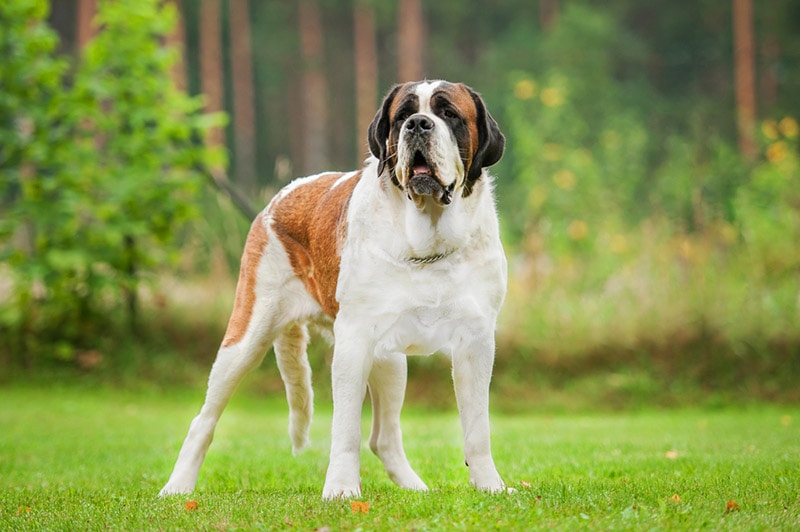
Which Breed Requires More Grooming?
Both breeds have long coats that must be brushed out regularly. However, the Great Pyrenees often requires more grooming. They shed profusely, especially as the seasons change. Their coat is very thick and weather-resistant, helping them survive in the mountains. However, it can also be a handful to groom.
To keep their coat healthy and free from tangles, regular brushing is necessary, ideally a few times a week. Saint Bernards also have a thick, double coat. However, it tends to be shorter than the Great Pyrenees’ coat and sheds less profusely. You’ll need to brush their coat one or two times a week, in comparison to the almost daily brushing the Great Pyrenees requires.
Remember, these dogs are large and have more fur. Therefore, grooming sessions tend to take longer.
Which Breed Is Right for You?
Both of these dogs are very similar in terms of their care needs. They are very large, so you’ll need to have plenty of space.
Great Pyrenees do have slightly longer lifespans and are smaller than Saint Bernards. Therefore, they may be a good option for those that are looking for a “smaller” huge dog. Saint Bernards also drool, which Great Pyrenees do not do very much.
See Also:
- Great Pyrenees vs Samoyed: Differences Explained (With Pictures)
- Polish Tatra Sheepdog vs Great Pyrenees: The Differences (With Pictures)
Featured Image Credit: (L) Beatrice Foord-St-Laurent, Shutterstock | (R) Siddharth shah, Unsplash




